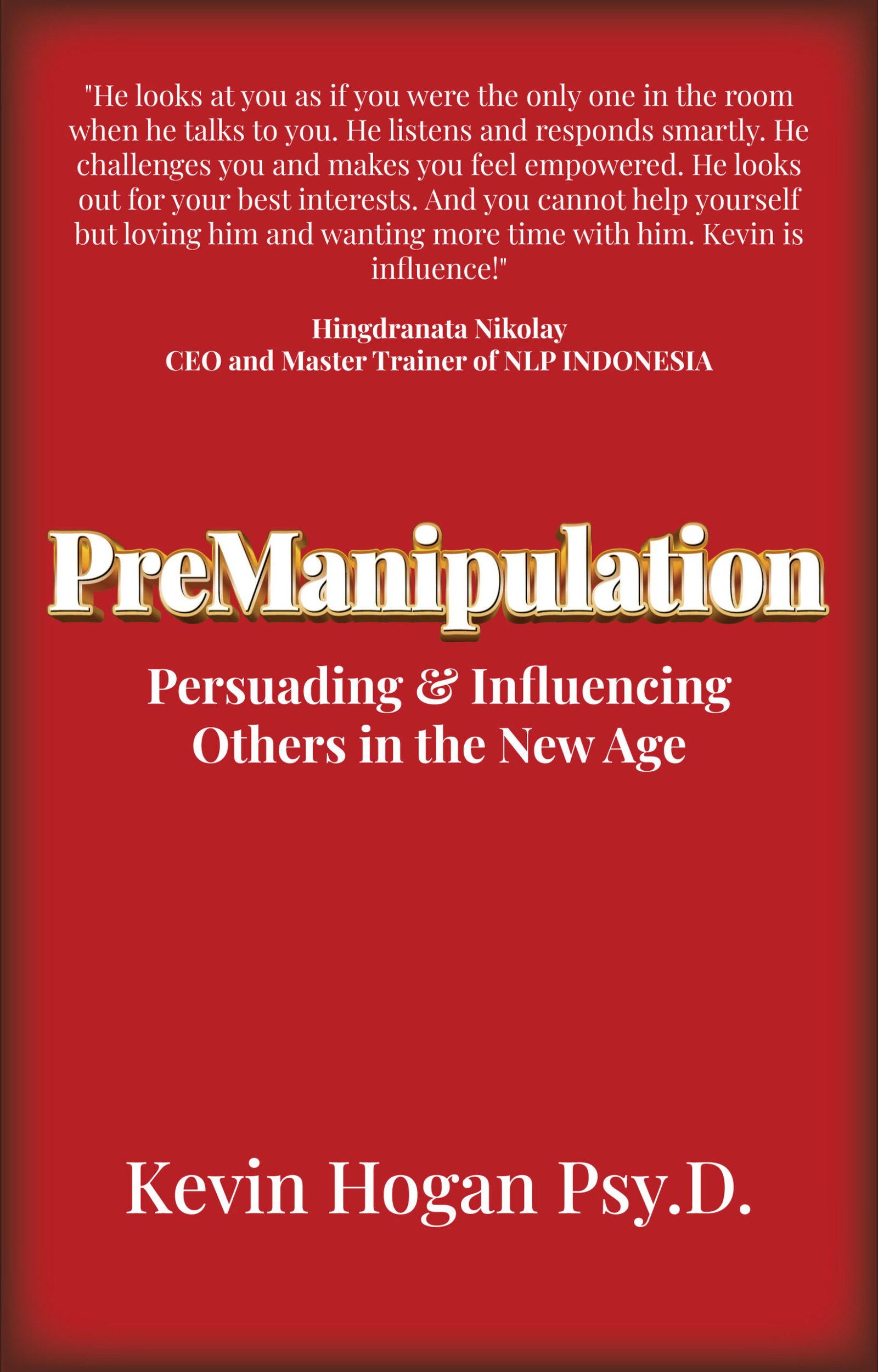 There is a definite quality of overlapping programs within each of us. If you watch the NBC news and flip to the CBS news, some of the stories are the same and some are unique to each channel. Metaprograms are similar to this experience. In this section, you will learn some of the “new metaprograms” that are critical to understanding how and why other people communicate as they do. You may feel that there are relationships between two metaprograms and that is a sign that you are becoming consciously aware of the programs that are running your mind, and a good sign of understanding this method of understanding and utilizing personality traits in communication.
There is a definite quality of overlapping programs within each of us. If you watch the NBC news and flip to the CBS news, some of the stories are the same and some are unique to each channel. Metaprograms are similar to this experience. In this section, you will learn some of the “new metaprograms” that are critical to understanding how and why other people communicate as they do. You may feel that there are relationships between two metaprograms and that is a sign that you are becoming consciously aware of the programs that are running your mind, and a good sign of understanding this method of understanding and utilizing personality traits in communication.
Metaprograms are among the deepest “filters” of perception. These internal sorting patterns unconsciously help us decide what we pay attention to. Metaprograms are, generally speaking, “content free but context dependent.” Like a computer software program, the sum of people’s metaprograms do not actually store information but determine what drives her in life. Her state (of mind) is effected by her metaprograms and they play a significant role in creating his internal representations (his pictures of how he views the world at the conscious and unconscious level).
In order to use a computer program effectively, you must understand how use it. In order to communicate in an efficient manner, you must understand what metaprograms they use. Because metaprograms are deletion and distortion filters that adjust our generalizations (beliefs), we can predict the states of mind of virtually anyone we talk to if we know their metaprograms. If you can predict your client’s internal states, you can easily know approximately what they are thinking and therefore how best to further talk to them.

There are about 50 metaprograms that have been identified as sorting patterns, types, traits and functions for individuals. You will now learn the “new” metaprograms that most effect the communication process. Remember that all metaprograms exist on a continuum, and are not either/or representations of personality! As previously noted, some people are very extroverted and other people may be just a little extroverted. The behavioral distinctions between someone who is extroverted and someone who is very extroverted can be described as analogical to a good conversationalist compared to someone who never stops talking to listen.
We have already discussed the four core metaprograms (behavioral tendencies) that Jung, Myers, Briggs, Keirsey, and Bates have so brilliantly educated us about. As you learn about the “new metaprograms” or behavioral tendencies, you will also learn key words and phrases that literally open the doors of the mind you are talking to. How you utilize this powerful information is something you will have to be aware of on your own. The first of the new metaprograms we want to examine is that of the pain /pleasure sorting pattern. This metaprogram is probably the most important metaprogram in talking your way to the top in life.
The Pleasure/Pain Tendency
A. Experience Pleasure……………………………..Avoid Pain
bright future………………..sick of the way things are
feel great………………………….stop getting hurt
move toward…………………………….away from
Make new friends…………………… stop being lonely
obtain…………………………………..get rid of
Decades of scientific research clearly show that people are more motivated by (avoiding) pain than by (gaining) pleasure.
What this means is that you not only will paint a picture of a vivid wonderful future for your friends and associates when talking to them, but you must also find their current wounds (pain) and heal them. In fact, this one key behavioral tendency drives over a hundred other tendencies and is the foundational key in determining what people will do almost anything to avoid significant pain.
People are motivated to move toward pleasure and away from pain. Of the two driving tendencies, most people have been imprinted to move away from pain more than moving toward pleasure.
Remember the examples earlier in this book that helped us understand how someone’s communication style can be shaped by childhood experiences? Imagine that you are in sales for just a moment. Imagine one of your customers was a child he was regularly threatened with pain (a spanking, a slap in the face, loss of privileges) when he behaved in a bad way. This developed very thick and powerful behavioral tendency which many other behavioral tendencies are attached to. A smaller number of your customer’s parents regularly motivated them as children by offering rewards for good behavior. Most parents use threats of punishment in order to gain compliance. Your customer continues to want to do anything he can to avoid pain. If that means complying with you, that is what he will do.
The Amway Corporation has built one of the largest privately held corporations in the world by pulling the mind strings of those with an entrepreneurial spirit and focusing on the pleasure end of the pain pleasure metaprogram. They help their distributor’s build dreams and create vivid and lush futures. They move their distributors toward pleasure, as a rule of thumb.
In contrast, hundreds of the world’s largest corporations have built their fortunes by pulling the mind strings of the populace on the pain side of the pain/pleasure metaprogram. History and scientific research has shown that people are very averse and to pain. As mentioned above, most people will do far more to avoid pain than experience pleasure. The experience of pain is the driving force of billions of dollars in the advertising industry. How many of these slogans and commercial themes sound familiar to you?
- “Aren’t you hungry for Burger King, now?”
- “Do you suffer from headache pain?”
- “Do you feel achy?”
- “Can’t sleep at night?”
When you are talking with your client or any other kind of listener, your job, in part, is to show how your product or service will create great pleasure if they accept your proposal and also act as a way to avoid pain. If they fail to hire you, you show them how their wound will grow and create pain for them in the future. If they hire you, you will help them heal their wound.
Anthony Robbins, the world’s most powerful motivational speaker got to that pinnacle of success by being able to clearly create vivid pictures of what would happen to people if they didn’t allow him to help them. You can utilize the power of the pain/pleasure metaprogram just like Robbins has done.
If you have elicited your listener’s metaprograms, then you can focus on the context specific information you have elicited instead of relying on the general rules we have discussed here. In marketing products, for example, we must rely on the norms. In the direct sales situation, on the other hand, we have a marked advantage of knowing exactly what motivates each specific client.
One effective language pattern that helps the client experience the pain of not working with you, is for you to say a variation of the wound opening, “If you don’t act on this now, then won’t things simply get worse?”
The more the customer fears and moves away from pain, the more likely she is to act now. It is our job to paint a picture of the consequences of failing (for example) to hire you. Experiencing pain must be more than an idea, it must be real to the listener.
If we fail to successfully share our winning ideas that require change, then they are not accepting these ideas because they still associate too much pain to change and we simply have not done your job. Nothing will get a person to change their point of view or buy a product if they are still unconvinced. You must help the person see the obvious and clear benefits, emotional and logical to accepting your products and services.
Your job as a communicator on the way to the top is often to paint the status quo as miserable. Most people have a fear of change. It is often genetically hard wired within them and when not, fear is imprinted early in childhood. Therefore, when painting the status quo, it must hurt to experience it. You must bring out the pain of not changing and make it vivid. Someone who associates no drawbacks or very little pain in the status quo will not accept your proposal. They will say, “no.”
The more someone moves away from pain and experiences fear, the more likely they are to act on a decision, now.
The Amway Corporation has utilized a wonderful tool for helping potential distributors feel the pain of failing to become Amway entrepreneurs. For just a moment, remember when you were first presented with the opportunity to become involved as a distributor. One of the dark pictures the speaker painted for your future was this: If you don’t become a distributor, how else are you going to become, financially independent? Do you really want to work at that the same job and forever? Are you really going to be happy with $35,000 per year, every year for the rest of your life?
Does Amway or any company or salesperson, have a right to pull at these mindstrings? You bet they do, because they are a company helping make the world go around. Multilevel marketing may or may not be an outstanding entrepreneurial opportunity for any individual, but just for a moment, realize how Amway has become so vast: Amway utilizes the pain/pleasure metaprogram better than any private organization in the world.
This Exercise Is Worth $100,000, Do It Now.
On a piece of paper,write down 20 painful futures that your customers or clients could experience if they don’t own your product or use your service. Then write down 20 bright futures that your customers or clients will experience if they do use your product or service. The next time you meet with a client you will have a vast array of futures to offer your customer. It is the quality of the images that you help your listener see that will make you thousands of dollars per year in additional business.
Cost/Convenience Tendency
B. Cost………………………………… Convenience
If you are involved in selling or marketing, you should read and understand this tendency carefully. If not, you can move on to the next section. At some point in the sales interview, you will need to determine whether your client is more concerned with speed and convenience or cost.
Many people will take a quick trip to the local convenience store to pick up a few items even though they cost far more than the grocery store charges, for the simple reason that the convenience store is right on the corner and it only takes a minute to get there. It is convenient. The convenience of the stories proximity is considered by most to be more important than the increased cost of the goods at the store.
If you are selling financial products then you’ll need to find out whether your client really has the time to closely follow the daily stock reports and make day-to-day decisions about his investments. Would he be happier if you took care of this for him? Is it worth the small cost involved for you to handle his finances in exchange for the incredible burden it lightens within him?
If you sell real estate, does your buyer really want to commute an extra 30 minutes per day to save ten thousand dollars on the price of a house? You need to find out whether the person is more motivated by cost or convenience before the buying process begins.
Relationship Tendency
C. Match…Match/Mismatch…Mismatch/Match…Polarity
same as………same except…………completely different
in common………..more………………totally changed
like before……….progress……………..one of a kind
Take three coins and place them on the table in front of you. Describe the relationship between those three coins in the space provided.
If you said that the three coins are all money or that they are all coins or that they are all heads or all made of metal, then you are what is known as “a matcher.”
If you said that they are all somehow similar but there are also differences in some way, then you would be typed as “a matcher with a mismatch.”
If you said something to the effect of “they’re all different but they do have this in common,” then you are a “mis-matcher with a match.”
If you found that all three coins were distinctly different from each other with nothing in common then you are what is known as a “polarity responder.”
In the real world, you may or may not be able to utilize such a tool. In talking with others, if you needed to instantly know your client’s relationship program, you would ask, “What is the relationship between your job (or something similar) this year and last year?” The response you get will be traceable to somewhere on the continuum. This will help you frame your communication.
Convincer Tendency
D.Internal………………………………….External
I think……………………………………She thinks
I feel………………………………….They tell me
My instincts tell……………………….Research shows
How does your listener know if he should do something or not? You can ask him how he was convinced the last time he successfully made a major decision. You don’t want to know how he was convinced of making a big mistake, you want to know how he was convinced of making a good decision.
- “Are you glad you bought your current home?”
- “Sure it’s been great.”
- “What convinced you to buy this home?”
Your client will now tell you a story. That story will largely revolve around people and data helping him make his decision or around his gut level intuition, his feelings. Once you know whether your client is convinced of good decisions by either Internal or External sources of information, you can then pace and match that source of information.
- “I just had a feeling that it was the right place.”
- “I want you to tell me if you get that feeling again when we look at the next home we are going to visit.”
or
- “It matched all of the criteria we set up. It had three bedrooms upstairs, an office and a swimming pool.”
- “You mentioned that you are now looking for a larger home earlier with a fireplace and the same nice qualities of your current home. When we come across your next home, let me know right away.”
Where Can You Find More Information Like This?
Science of Influence: The Master’s Home Study Course CD Set Volumes 1-12
Here are just some of the incredible things you will learn when you receive the first 12 cds in the series:
- Discover which of the desire to gain or the fear of loss is TRULY the far greater motivator and how to harness that power in your persuasive messages.
- Learn what may be the single most important element of influence you have ever been introduced to. I have NEVER released this information on audio, video or in manual form
- Discover how skeptical and non-skeptical people perceive and respond to persuasive messages in a VERY different fashion. (Hint: If you don’t know this information you will automatically lose almost 1/4 of all of your encounters.)
- Ethical techniques to hypnotically enter another person’s mind and reshuffle their deck!
- The one way that reciprocity can blow up and completely backfire.
- How to prepare your unconscious mind to always present the right body language at the right time.
- There is one KEY factor in making your clients decisions permanent: Here it is!
- How to specifically use Hypnotic Confusion in influential messages.
- The One Question that someone MUST say “Yes” to every time!
- The most effective non-coercive way to gain compliance on record.
- How do you create metaphors…based upon the person/audience you are speaking to?
- So much more!
Science of Influence: Strategies & Syntax of Persuasion






















